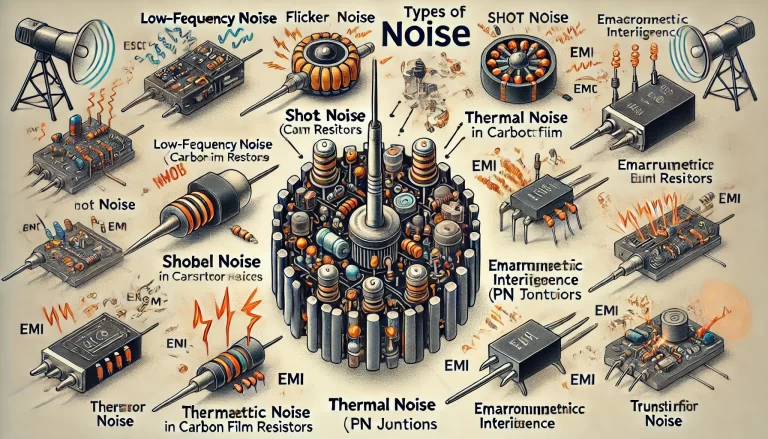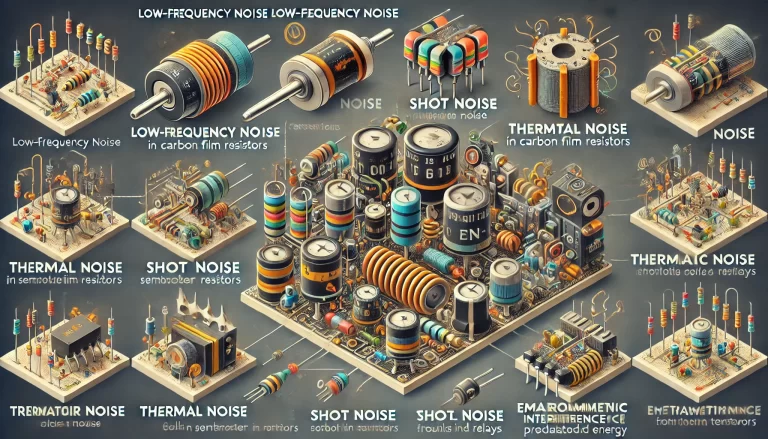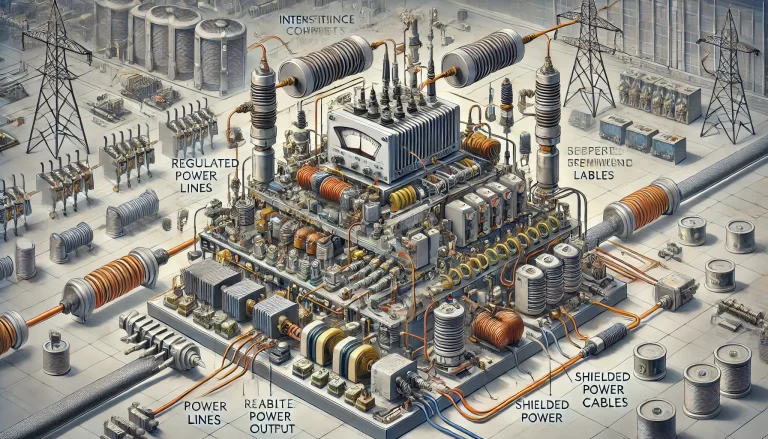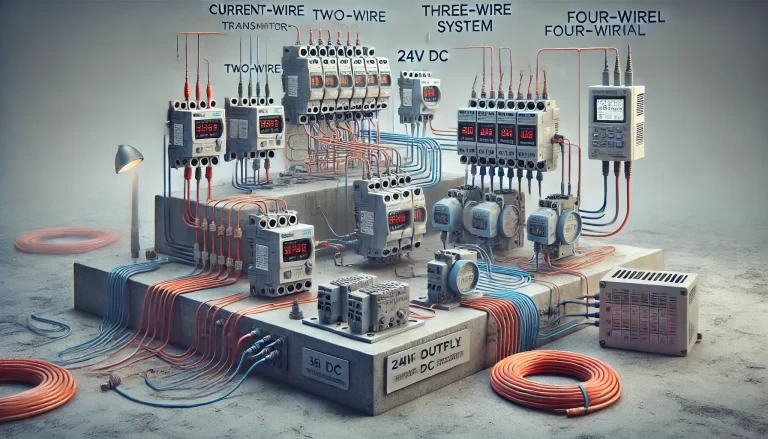Noise in transmitters can significantly affect the accuracy and reliability of measurements in industrial and electronic systems. Understanding the different types of noise that can occur within a transmitter helps in designing systems that minimize these disturbances, ensuring more stable performance. Below is a detailed breakdown of the common types of noise found in transmitters, how they are generated, and their impact on system performance.
1. Low-Frequency Noise (Flicker Noise)
Low-frequency noise, often referred to as “flicker noise” or “1/f noise,” arises from discontinuities within the conductive paths of electronic components. This type of noise is especially prevalent in materials like carbon, which are used in components such as carbon film resistors. In carbon film resistors, small conductive particles exist within the material, and these particles are not perfectly continuous. When current flows through such resistors, the conductivity varies slightly due to these irregularities, causing random fluctuations in the current. These fluctuations manifest as a noise source that resembles contact arcing or poor electrical connections.
In addition to resistors, flicker noise is also common in semiconductor devices like transistors. In these devices, impurities and defects in the material or at junction interfaces lead to similar discontinuities, causing random current variations. This noise is particularly troublesome in low-frequency applications and can be significant in precision circuits.

2. Shot Noise (Semiconductor Devices)
Shot noise occurs primarily in semiconductor devices and is caused by the discrete nature of electric charge. In a typical PN junction (the boundary between a P-type and N-type semiconductor), electric charge carriers must overcome the potential barrier to move across the junction. As the voltage across the junction changes, the number of charge carriers in the barrier region fluctuates, causing small, random current variations. This noise is called shot noise because it arises from the “quantum shot” of electrons across the junction.
Shot noise is proportional to both the current flowing through the junction and the bandwidth of the system. It increases with temperature and broader frequency ranges (Δf). While it is generally smaller than flicker noise at low frequencies, shot noise becomes more prominent in high-frequency or high-current systems, particularly in semiconductor-based amplifiers and sensors.
3. Thermal Noise (Johnson-Nyquist Noise)
Thermal noise, also known as Johnson or Nyquist noise, is a fundamental type of noise caused by the random motion of electrons within a conductor due to thermal energy. This noise is present in all conductive materials, and its magnitude is proportional to the temperature of the material. The random motion of electrons creates small, fluctuating voltages that are typically harmless but become more problematic when amplified.
Thermal noise affects both passive components (such as resistors) and active devices (such as transistors). Although the average current produced by thermal noise is zero, when these components are placed in circuits with amplification (especially at high frequencies), the random fluctuations can be significantly amplified and lead to undesirable noise in the output signal. Thermal noise becomes more noticeable as the system’s operating temperature increases, which is particularly critical in high-frequency or high-power systems.
4. Electromagnetic Interference (EMI) from Circuit Components
Electromagnetic interference (EMI) is another common source of noise in transmitters, often caused by components such as relays, inductors, and other electromagnetic elements on circuit boards. When current flows through coils or inductive elements, they produce magnetic fields that can radiate energy. This radiated energy can interfere with nearby components, inducing currents or voltages that add noise to the system.
Relays and other switching devices are particularly problematic in this regard. When a relay switches on or off, it can produce a sudden surge in current or a high voltage spike, known as a “transient.” These transients can couple into nearby circuits, causing momentary disruptions in their operation. This type of noise is especially disruptive to sensitive analog circuits, and it may lead to system instability or false readings in sensors.

5. Transistor Noise
Transistors, a key component in many transmitters, contribute multiple types of noise, including thermal noise, shot noise, and flicker noise.
Thermal Noise: As with resistors, transistors exhibit thermal noise due to the random motion of charge carriers. This noise is generated as electrons or holes pass through the base, emitter, and collector regions, encountering resistance that produces random voltage fluctuations.
Shot Noise: In bipolar junction transistors (BJTs), the collector and emitter currents exhibit small, random variations because of the discrete nature of charge carriers crossing the PN junction. The size of the shot noise depends on the operating current of the transistor.
Flicker Noise: Flicker noise in transistors arises from imperfections at the junction surfaces or impurities in the semiconductor material. These imperfections cause random fluctuations in the current and are especially prevalent at lower frequencies. Flicker noise is more common in devices with poor surface cleanliness or lower-quality manufacturing processes.
6. Resistor Noise
Resistors, a fundamental passive component in electronic circuits, generate noise through two primary mechanisms: thermal noise and parasitic inductance/capacitance.
Thermal Noise: As mentioned earlier, resistors produce thermal noise due to the random thermal motion of electrons within the conductive material. This noise is directly proportional to the temperature and resistance value of the resistor.
Parasitic Effects: In addition to thermal noise, resistors can exhibit parasitic inductance and capacitance, especially in high-frequency circuits. These parasitic elements can lead to additional noise and unwanted interactions with other components in the system.

7. Integrated Circuit (IC) Noise
Integrated circuits (ICs) are complex systems of interconnected transistors, resistors, and other elements, and they introduce two main types of noise: radiated noise and conducted noise.
Radiated Noise: ICs often emit electromagnetic radiation, which can interfere with nearby components on the same circuit board. This radiated noise typically affects other circuits connected to the same power supply or ground plane and can be especially problematic in mixed-signal systems where both analog and digital circuits coexist.
Conducted Noise: Conducted noise arises from transient events within the IC, such as switching transients in digital logic circuits. These transients can create sharp voltage spikes that propagate through the power supply or ground connections, causing noise in other parts of the system. This type of noise is especially critical in systems where ICs share power rails with sensitive analog components.

Conclusion
In summary, noise in transmitters can arise from a variety of sources, including low-frequency flicker noise, shot noise in semiconductor devices, thermal noise due to random electron motion, and electromagnetic interference from nearby components. Each type of noise has its own underlying cause and effects, which can impact the overall performance of the transmitter. By understanding these noise mechanisms, engineers can design circuits that mitigate these effects, using techniques such as shielding, grounding, filtering, and the careful selection of components to minimize noise and improve system reliability.
